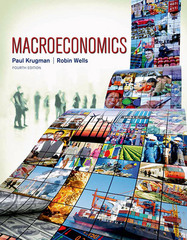Tutorial Questions Can you recover any of the missing coefficient parameters from the You believe that the firms in the widget industry are all price takers in input original three equation system by using the homogeneity and symmetry markets and have access to identical production technologies that can each be restrictions that economic theory suggests should apply to that system represented by a common production function of the form f : R - R++. of equations? If so, identify them and describe how you would do this. The three inputs are land _), labour (N), and capital (K'). The output of (In other words, provide explicit formulae for the original parameters widgets is denoted by Q. The price of land is denoted by we, the price of that you can recover in terms of the above parameter estimates. Are labour is denoted by wn, and the price of capital is denoted by wx. You there any missing coefficient parameters that cannot be recovered? If have observations on the vector (Q, L, N, K, wL, wy, wx) for each firm in the so, identify them and explain why they cannot be recovered. industry and are willing to assume that the variation in prices across the 5. Cost functions are homogeneous of degree one in input prices. Obtain a firms has been caused solely by input-supply shocks, so that the input prices set of parameter restrictions that ensure that this condition is satisfied can be treated as exogenous variables. You are also prepared to believe that in the above example. the widget industry is in a state of long-run competitive equilibrium, as are all of the associated markets. You want to explore the relationship between 6. Output-conditional input demand functions are homogeneous of degree the various long-run output-conditional input demands for the firms in this zero in input prices. Obtain a set of parameter restrictions that ensure industry. that this condition is satisfied in the above example. 1. You decide to employ a second degree (quadratic) translog approxi- 7. Young's Theorem suggests that the second-order partial derivatives of mation of the long-run cost function for a firm in your study. What any function that is at least twice continuously differentiable will be is the translog long-run cost function for a representative firm in this invariant to the order of differentiation. What restrictions, if any, does industry? this impose on the system of output conditional input cost shares in the above example? 2. Use Shephard's lemma, the chain rule of differentiation, and the inverse function theorem to derive the system of three output-conditional input cost share equations for this representative firm. (You may assume that Additional Practice Questions both the underlying cost function and the translog approximation to it are at least twice continuously differentiable.) You want to explore the output-conditional input demands by the firms in a particular industry. You believe that all of these firms are price-takers 3. Explain why you cannot estimate all three of these equations together in all input markets and have access to an identical production technology as a system of seemingly unrelated regression equations? (Hint: Ex- that uses only two inputs (labour and capital) to produce a single output plain why the three equations cannot form a linearly independent equa- (widgets). You decide to employ a quadratic translog approximation of the tion system.) long-run cost function. Assuming that all prices are strictly positive and a 4. Suppose that an econometrician provides you with the following es- strictly positive amount of each input is employed, this yields the following imated system of two output-conditional input cost share equations, complete system of long-run output-conditional input cost-share functions after dropping the equation for land and reparameterising the other for the firms in this industry: two equations in terms of relative input-prices: SL = QL + aLL In (wL) + ack In (wx) + are In (@) N = at8In ( WN ) + yln (WK ) + 5 In (Q) and sk = ax + aKL In (wL) + age In (wx) + axo In (Q), and K = 0+win (WN ) + Aln (wx ) + u In (Q). where we is the input price of one unit of labour facing a particular firm, wx is the input price of one unit of capital facing that firm, and @ is the quantity 2 3







